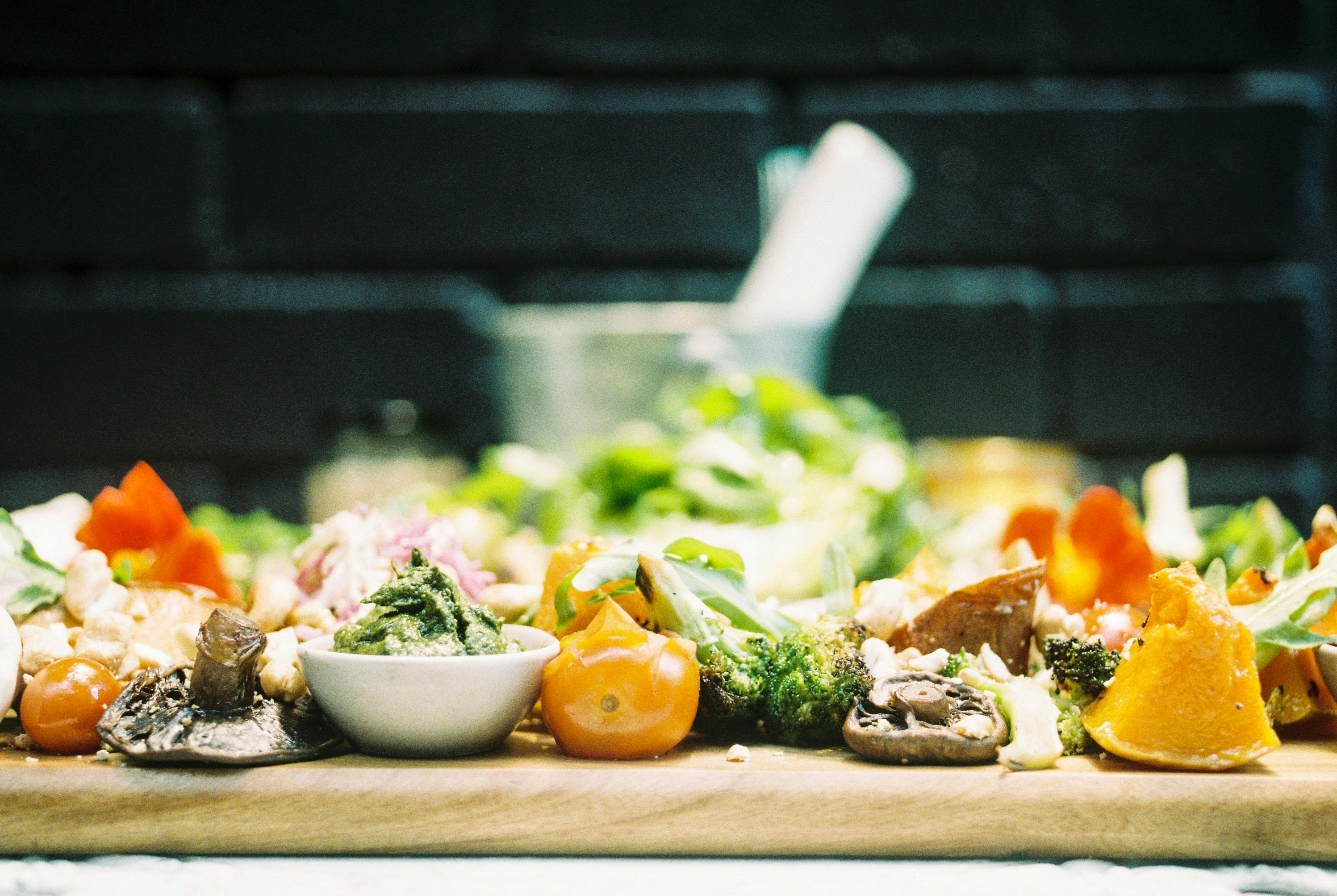
Adopt smart storage solutions to reduce food waste
 The Carbon Trust
The Carbon TrustSummary
Around 13% of food loss occurs due to inadequate refrigeration; sustainable cold chains can reduce emissions and increase revenue by keeping perishable items fresher for longer.
Key resources
Context
Food waste is responsible for 6% of all global greenhouse gas (GHG) emissions (1). Inadequate refrigeration is a major contributor, responsible for around 13% of food loss (2) and 526 million tons of food going to waste each year (3). The lack of access to refrigeration is a particular challenge in developing countries (especially in rural areas where food is most often produced).
As Figure 1 below illustrates, most food loss in developing countries takes place at the post-harvest and processing stages of the supply chain, as opposed to the consumption stage. Post-harvest food loss reduces income for small-scale farmers by up to 15%, with farmers in developing countries most affected (4). Good cold chain management can help address these problems, by keeping food at suitable temperatures from when it is harvested until it reaches the consumer.
Figure 1: Bar chart displaying the global variation in per capita food losses and waste.

However, there are emissions associated with cold chains. Refrigeration equipment consumes electricity, and temperature-controlled vehicles often run on fossil fuels. Refrigerant gases have high global warming potential and can leak. This not only contributes directly to atmospheric emissions, but makes cooling systems less efficient, meaning they need to use more energy to keep food cool. Currently, the food chain is responsible for around 4% of global emissions, and this is set to increase as cooling infrastructure is expanded in developing countries (5). As such, it is vital to ensure that cold chains are as sustainable as possible.
In addition to storing food at suitable temperatures, smart food storage entails optimizing conditions like moisture and UV light exposure. Improving food storage conditions allows it to stay fresher (and edible) for longer, thus reducing the volume wasted.
Solution
There are several ways to extend the shelf life of perishable food and help reduce food waste, including:
Implementing cold chain management
Cold chain management ensures that temperature-sensitive goods are preserved as they are transported throughout the supply chain. According to the International Institute of Refrigeration, improved cold chain systems could feed the equivalent of 950 million people per year (2). These improved systems include temperature-controlled storage facilities and vehicles, insulated packaging, and sensors to monitor temperature. In addition, blockchain technology can provide real-time data on the temperature, humidity, and location of products throughout the supply chain to ensure they are transported correctly (6).
Storing food with solar power storage
Solar powered cold room units can keep food refrigerated, even in areas with no access to grid electricity. This is particularly helpful in developing countries, where an estimated 45% of food expires, mostly because of insufficient cold storage (7).
Using smart refrigeration
Smart refrigeration systems optimize temperature and humidity conditions for different food products, preserving them for longer.
Improving on-farm storage
Effective and accessible food storage on farms is key to reducing post-harvest food loss. Appropriate temperature and moisture management can prevent food from perishing before it reaches distribution and consumption destinations. Companies can reduce crop losses by investing in modern grain silos, warehouses, and refrigeration systems.
Using real-time digital labels
Food is often discarded when it reaches its sell-by date, despite still being safe for consumption. New technologies such as digital labels allow for real-time monitoring of food quality. Digital sensors embedded within labels alert food service providers and consumers to the presence of spoiled food, helping to prevent food from being discarded prematurely.
Usage
Benefits of a cold chain: Kinnow pilot study in India
Kinnow is a seasonal, high-yield and low-cost mandarin-variety fruit produced in the western Punjab area of India. A lack of suitable local cold chain facilities meant the fruit was only sold locally or in nearby states. After catering to this limited demand, large quantities were left unharvested or discarded every season. A pilot cold chain project to supply the fruit was developed in 2016-17 under India’s National Centre for Coldchain Development (NCCD) and executed with the support of Carrier Transicold, a global refrigerated transport company. The project results demonstrated that proper use of the cold chain not only extended the saleable life of produce, but also helped expand its selling radius. Connectivity resulted in faster cash flows for farmers, instead of having to store inventories while awaiting sales in the local market. Through the project, food losses declined by 76%, adding to higher returns for farmers, and systemwide GHG emissions fell 16%, even while using diesel-powered transport refrigeration units and grid-based electricity (see Figure 2) (4).
Figure 2: Impacts of a pilot cold chain project in India

Impact
Environmental impact
Climate impact
Preventing food waste would reduce anthropogenic GHG (notably methane, nitrous oxide, and carbon dioxide) emissions produced by decaying food by 8-10% (8). Reducing food waste can therefore greatly contribute to meeting global targets in line with the Paris Agreement.
According to the Waste and Resource Action Program (WRAP), reducing GHG emissions associated with food and drink by 2030 (against a 2015 baseline) is an achievable near-term target aligned to a 1.5°C pathway and meeting further targets for Net Zero by 2040 (9).
Decarbonization impact
FAO estimated that global 2011 GHG emissions would have been reduced by 1.4 gigatons had food waste losses at distribution and consumption stages halved, and food losses in upstream stages reduced. This value corresponds to 3% of all anthropogenic GHG emissions; reducing food waste can have a significant decarbonization impact (10).
Business impact
Benefits
Improved brand image: Consumers are increasingly aware of the impacts of food waste. Altering business plans to align with environmental targets could appeal to customers and therefore increase overall profits.
Financial returns: A recent study by WRAP found that UK companies that spent £1 on food waste management saw a return of £14 on average (11). Cold chain interventions, including pre-cooling, post-harvest cold storage, and ripening chambers, resulted in three times higher value for banana farmers in India, as well as 20% less waste. Automation and other energy efficiency measures also reduced energy costs in the ripening chambers by 25% (12).
Costs
Upfront costs associated with acquiring cold chain equipment, like refrigeration units and temperature-controlled vehicles. Companies that are unable to purchase this equipment outright may be able to hire assets or take advantage of pay-per-use models to reduce upfront costs and investment risks.
Ongoing operating costs associated with running refrigeration facilities. Using more efficient commercial refrigeration equipment can cut electricity usage and associated costs by up to 80% (4). Additionally, where farmers do not own the equipment (e.g., in cooling-as-a-service, pay-per-use arrangements etc.) the technology provider will likely cover maintenance and other operating costs. This incentivizes the provider to improve the energy efficiency of their equipment to minimize costs.
Impact beyond climate and business
Co-benefits
Implementing sustainable cold chain systems can also contribute to several UN Sustainable Development Goals, including:
No poverty (SDG 1): Access to affordable storage can increase revenues for farmers, as less of the food they produce will be wasted and more can be sold.
Decent work and economic growth (SDG 8): Cold chains keep food fresh for longer and over longer distances. This connects farmers in rural areas with customers further afield, boosting local economies and reducing the need to migrate to cities to find decent work.
Good health and well-being (SDG 3): Storing food properly reduces contamination and spoilage, which also reduces the risk of food-borne illnesses.
Implementation
Typical business profile
Food losses due to improper storage occur at all stages of the food value chain. Therefore, cold chain solutions are suitable for any company whose primary business is producing, handling, transporting, selling, or serving perishable foods. Companies handling other perishable items, such as pharmaceuticals, are also key cold chain users.
Approach
Assess needs: Companies must understand where in the food value chain most of their food waste comes from (e.g., during transportation or during storage in warehouses etc.). Companies should then consider the storage requirements of the individual food items they handle, including optimum temperature and humidity.
Design a sustainable cold chain: Once companies understand their needs, they can select the cold chain components that are most beneficial and cost-effective for their business, from temperature sensors and insulated packaging to temperature-controlled vehicles. Companies should look for equipment with the highest energy efficiency rating available to minimize emissions and reduce costs in the long term.
Identify opportunities: Build the business case for investing in cold chain solutions, considering payback time and any financial support available. Estimate whether the emissions savings from reduced food waste will outweigh the increase in emissions from implementing cold chain solutions.
Implement solutions: In addition to purchasing equipment and partnering with logistics providers, it is important that companies ensure their cold chains run smoothly. This may involve training staff on efficient loading and unloading of vehicles (so food spends as little time as possible in ambient temperatures) and efficient storage layout (so as much food as possible can be stored, without compromising air circulation).
Monitor performance: Companies can consider using monitoring and tracking software to gain real-time insights into how their cold chain is operating. This will help them identify any inefficiencies or maintenance needs. Moreover, companies and their refrigeration equipment provider should have a plan in place to monitor and manage refrigerant leakage.
Stakeholders involved
A food cold chain is a complex system that has many static and moving elements (see Figure 3). As such, it requires accountability from multiple levels, including farmers, aggregators, processors and manufacturers, distributors, retailers, and consumers.
Figure 3: Typical food logistics cold chain steps and stakeholders

Source: UNEP and FAO. 2022. Sustainable food cold chains: Opportunities, challenges and the way forward. Nairobi, UNEP and Rome, FAO (page 20)
Key parameters to consider
Solution maturity: Cold chain infrastructure is growing, but mainly in high-income countries. Developing countries currently refrigerate around 20% of perishable food they produce, compared to 60% in higher-income countries (2, 4).
Lifetime: Refrigeration equipment can last 10+ years; reusable cool boxes used for last mile delivery can last around three years (4).
Technical constraints or pre-requisites: Businesses in low or middle-income countries should consider the reliability of electricity grids and road infrastructure when planning to implement cold chains. In some cases, an interrupted cold chain can lead to worse outcomes than no cold chain (12).
Additional specificities: Check local legal requirements surrounding refrigerant use and minimum energy efficiency standards and food handling.
Eventual subsidies available: Companies can take advantage of relevant financial support in their area. For example, the Indian Government provides up to 50% subsidy support for cold chain infrastructure development, including modern packhouses, reefer vehicles, ripening units and cold stores, as well as energy-saving systems or retrofits. All cold chain services related to agricultural produce (including pre-cooling, transporting, and storing) are also fully exempt from the Goods and Services Tax (12).
Implementation and operation tips
Companies can take several steps to minimize energy use within their food storage solutions. This will minimize impact on the climate and lower operating costs.
Choose energy efficient food storage technologies to minimize environmental impact and running costs. Where possible, companies should obtain electricity from renewable sources for each of the solutions outlined above, to minimize carbon emissions.
Retailers should fit refrigerated display cabinets with transparent doors. Retailers with open-front coolers or cabinets that are opened frequently can make use of aerofoil technologies, which redirect cold air back into cooling units.
Refrigerated display cabinets and cold rooms should not be overstocked (an appropriately stocked unit will maintain optimum temperatures with minimum energy consumption). Air grills and evaporators should also be kept clear.
Companies should clean equipment regularly (ideally by a trained technician) to maintain performance.
Check regularly for leaks: Low levels of refrigerant can increase energy use by up to 15% (13). Companies may also be legally required to monitor and report leaks.